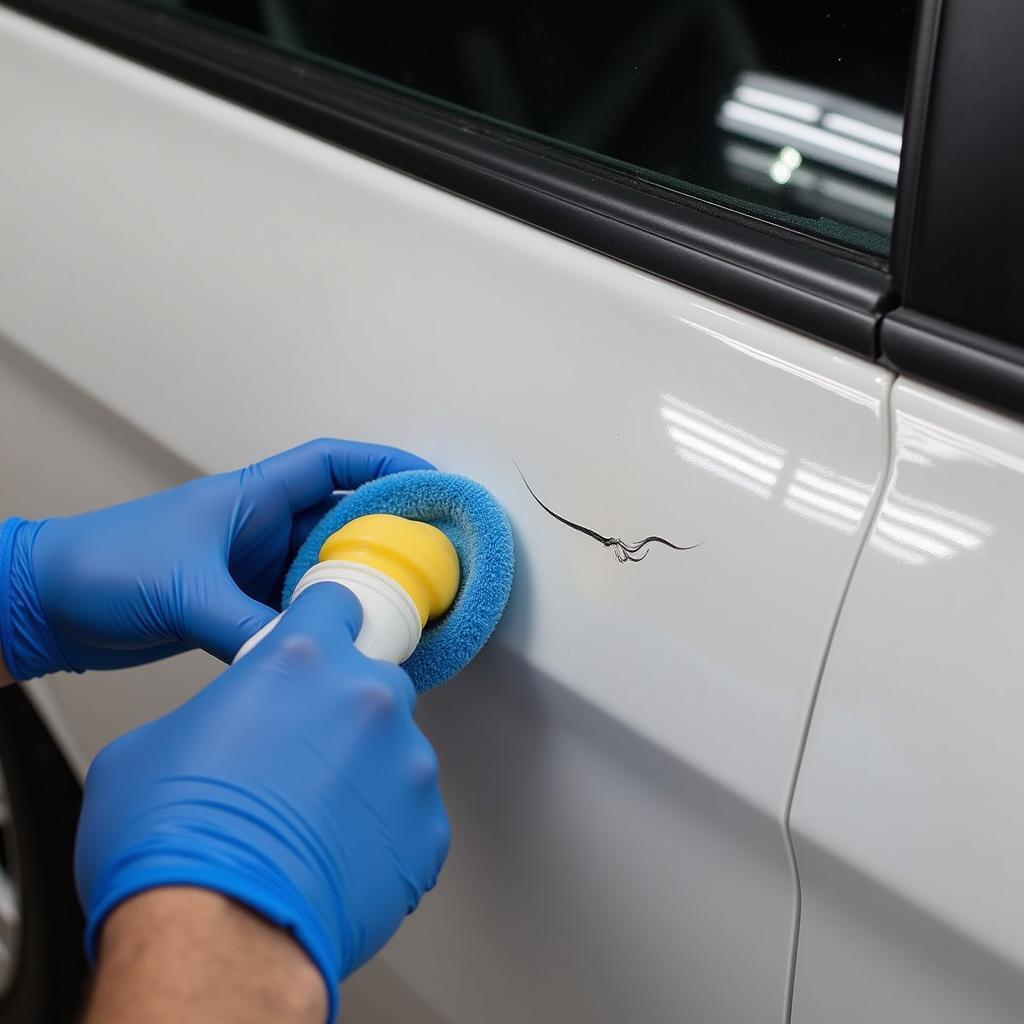Fixing paint scratches on your car yourself can save you a significant amount of money and is often easier than you think. This guide provides detailed steps, tips, and advice on how to assess the damage and choose the right method for your specific needs, from minor clear coat scratches to deeper ones. how to fix a car door crease
Assessing the Damage: Knowing Your Scratch
Before you grab any tools, it’s crucial to understand the severity of the scratch. Is it a light surface scratch that only affects the clear coat? Or is it a deeper scratch that has penetrated the paint and reached the primer or even the metal underneath? Identifying the depth will determine the right approach for fixing paint scratches on car yourself.
Run your fingernail across the scratch. If your nail catches, it’s likely more than a clear coat scratch and requires more involved repair. Knowing this helps you avoid unnecessary work and ensures the best possible outcome.
Fixing Light Scratches and Swirl Marks: DIY Detailing
Light scratches, often called swirl marks, are usually confined to the clear coat and are relatively easy to Fix Paint Scratches On Car Yourself. This is often a result of improper washing techniques. Luckily, these can often be removed with a rubbing compound.
- Wash and dry the affected area: Ensure the surface is clean and free from any dirt or debris.
- Apply rubbing compound: Using a microfiber applicator pad, apply a small amount of rubbing compound to the scratched area using circular motions.
- Buff the area: Continue buffing until the scratch disappears.
- Wipe clean: Remove any excess compound with a clean microfiber cloth.
 Applying Rubbing Compound to Car Scratch
Applying Rubbing Compound to Car Scratch
Remember, less is more when it comes to rubbing compound. Too much pressure or excessive rubbing can damage the clear coat further. fixing scratches on black car
Dealing with Deeper Scratches: Touch-Up Paint and Clear Coat
For scratches that penetrate the paint, touch-up paint is necessary. This process requires more precision and patience.
- Clean the area: Thoroughly clean the scratched area with soap and water, then dry it completely.
- Apply touch-up paint: Carefully apply a small amount of touch-up paint to the scratch using a fine-tipped brush or a touch-up pen.
- Level the paint: Allow the paint to dry completely, and then use wet sanding (using very fine-grit sandpaper and water) to level the touch-up paint with the surrounding surface. This requires extreme care.
- Apply clear coat: Once the paint is leveled, apply a thin layer of clear coat to protect the repair.
“Proper surface preparation is key when fixing paint scratches on your car. A clean and smooth surface ensures the best adhesion for the touch-up paint and clear coat,” says John Miller, an automotive paint specialist with 20 years of experience.
When to Call a Professional: Deep Gouges and Extensive Damage
While many scratches can be addressed at home, some are best left to professionals. Deep gouges that expose the metal underneath require specialized tools and techniques. how to fix door scratches on car
Attempting to fix these yourself can lead to further damage and a less than satisfactory result. how much to fix scraped car paint “Don’t underestimate the complexity of car paint repair. If you’re unsure, seeking professional help is always the best option,” advises Sarah Johnson, an experienced auto body technician.




Leave a Reply